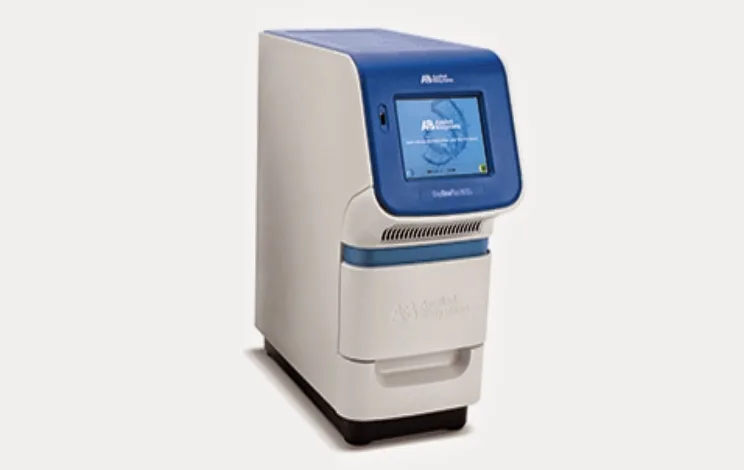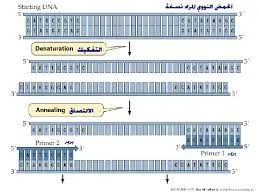Introduction
PCR is a common and important technique that is used in biological and medical research laboratories in different fields of biology. These applications include DNA cloning for sequencing, functional gene analysis, genetic fingerprint identification, and diagnosis of genetic disorders. It utilizes a DNA polymerase enzyme that helps in the production of DNA from deoxynucleotide substrates. DNA polymerase enlarges the 3rd end of an oligonucleotide by adding nucleotides. Therefore, “if a synthetic oligonucleotide is annealed to a single-stranded template that contains a region complementary to the oligonucleotide.” The DNA polymerase uses oligonucleotide as a primer. It will enlarge its 3rd end to produce a protracted area of DNA.
How It Works
There are three general steps of PCR: denaturation, annealing, and extensions. In Denaturation, the template of DNA is heated up to 95 degrees Celsius. The heat will break the hydrogen bonds between the two helices. It will separate the double strands and eventually lead to single-stranded DNA. The second step is annealing, in which the mixture is cooled at a temperature between 50 and 70 degrees Celsius. It would permit the primers to anneal or bind to the “complementary sequence” in the template Deoxyribonucleic acid (DNA). In the last stage, which is an extension, the reaction will be heated to 73 Celsius temperature. It is considered the best temperature at which DNA polymerase can act. DNA polymerase will add nucleotides to the primers in the sequence and extend the primers. It uses target DNA as a template. With the help of one cycle, two separate pieces of Deoxyribonucleic acid are amplified from a single DNA template. Two new pieces of DNA are then amplified for the upcoming cycle. More and more copies of DNA are produced by repeating the cycles (Saiki et al., 2008).
History
The polymerase chain reaction was conceived by Dr. Kary Mullis in the early ’80s. In 1980, almost all factors that are necessary for the PCR were discovered. Within the next two years, a group of scientists who identified the effects of a polymerase chain reaction on refined research and molecular biology made this process a reality. Mullis developed the idea to identify the point mutations by using DNA polymerase with the help of ddNTPs and primer. He gave the idea that through two primers and performing cycles that are comprised of three stages, one can get different copies of DNA.
How It Evolved Over Time
Thermal cycler and Taq polymerase played an important role in making PCR a great technology. In 1986, scientists used the Thermus aquaticus to isolate the Taq polymerase. It is a bacteria that is present in hot springs. Taq can bear high temperatures that decrease the human input in the process. It also decreased the time needed to complete the process. In 1987, a US-based company invented the thermal cycler. It plays a significant role in regulating the temperature of a reaction. This advancement also reduces the human effort that made this process efficient, elegant, and streamlined. In 1993, PCR was given a noble price in chemistry (Prodromou & Pearl, 2012).
How It Helped The Biological Field
It is utilized to investigate various samples for the presence of microorganisms such as anthrax, malaria, hepatitis, and HIV. Moreover, in evolutionary biology, PCR is utilized to recognize and describe relationships among different species. It is also considered very helpful in understanding the patterns of ancient human migration in the field of anthropology. Also, palaeontologists use this technique to intensify DNA from cryopreserved fossils or extinct species for a large number of years, which helps in the further study of these species.
Conclusion
PCR plays an important role in the amplification of small pieces of DNA. The efficiency of this process will be decreased if the region that wants to be amplified is a little larger. Therefore, it is necessary to make improvements by settling the PCR variables, like the PH of the buffers and chemical reagents, to get successful copies of bigger fragments of the DNA. It is also necessary to enhance the speed of thermal cyclers to make the process done quickly. However, it is a very useful process that is very slow to be utilized in clinical settings.
References
Prodromou, C., & Pearl, L. H. (2012). Recursive PCR: a novel technique for total gene synthesis. Protein Engineering, Design and Selection, 5(8), 827-829.
Saiki, R. K., Gelfand, D. H., Stoffel, S., Scharf, S. J., Higuchi, R., Horn, G. T., … & Erlich, H. A. (2008). Primer-directed enzymatic amplification of DNA with a thermostable DNA polymerase. Science, 239(4839), 487-491.
Cite This Work
To export a reference to this article please select a referencing stye below:









